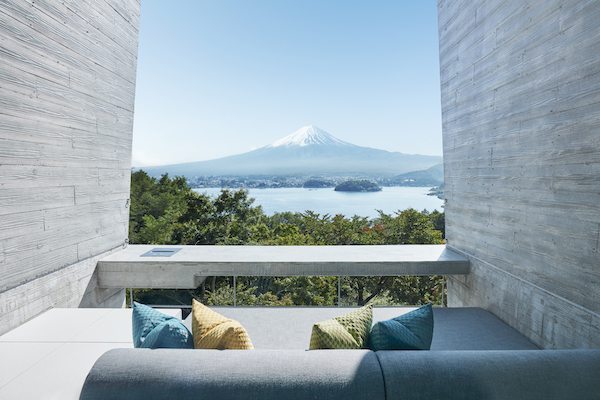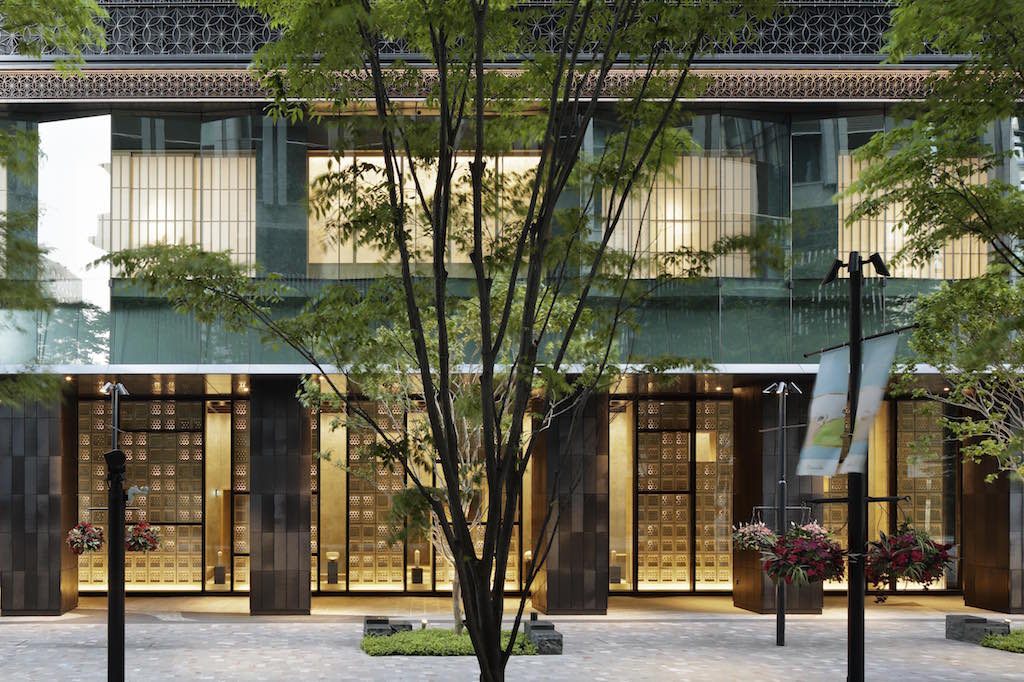Skift Take
The Hoshino Resorts brand melds Japanese tradition with modern design and incredible service. Its ambitions outside of Japan, if successful, may some day serve as powerful cultural diplomacy for the country.
 Colin Nagy, head of strategy at Fred & Farid, a global advertising agency, writes this opinion column for Skift on hospitality, innovation, and business travel. “On Experience” dissects customer-centric experiences and innovation across hospitality, aviation, and beyond.
Colin Nagy, head of strategy at Fred & Farid, a global advertising agency, writes this opinion column for Skift on hospitality, innovation, and business travel. “On Experience” dissects customer-centric experiences and innovation across hospitality, aviation, and beyond.
The Tokyo hotel market is competitive. Hospitality standards are notoriously high. For example, even a mid-market hotel here would easily achieve the top slots in other global cities.
In the Tokyo ecosystem, the Park Hyatt represents the classic and timeless, the Peninsula sits regally as a single, freestanding hotel structure on the Imperial Palace Gardens, and new entrants like the Andaz seek to carve out a fresh neighborhood hub in Toranomon. All the familiar luxury players are here, from the Shangri-La to the Four Seasons, as well as longstanding institutions like the Palace and the Imperial Hotel.
In addition to considered architecture and locale, the service experience across the board is absolutely unrivaled in other cities. The Japanese art of omotenashi — thoughtful anticipation — is something that once you see it executed well, it is unmatched in hospitality.
But, all of these aforementioned hotels are approaching lodging in a traditional, Western style. There exists an opportunity to differentiate.
Enter the Hoshinoya Tokyo. The property is the first foray into urban hotels from the 100-year old hospitality company, Hoshino Resorts, which is the name of the parent company and is run by fourth generation hotelier Mr. Yoshiharu Hoshino. The brand has been building slowly and deliberately in Japan, with resorts in Kyoto, Karuizawa, near Okinawa, and Mount Fuji, with the first international property opened in Bali in January 2017.
Each Hoshinoya property is architecturally unique, based on the land and surroundings. However, there is a distinctive thread in service, attention to detail, and also aesthetic that runs through each property. The brand has used a tight knit group of collaborators, including designers, architects, and landscape artists, working together since the start. There is a considered cohesiveness to the properties even through they celebrate different regions, temperatures and building styles.
While the traditional ryokan, or Japanese inn, features elements such as tatami mats, hot springs, and highly seasonal cuisine, the brand has recently brought this approach to the center of Tokyo, and updated it with modern twists, all while preserving a hushed, relaxed feel. It is a discrete, highly differentiated experience compared to the uniform, predictable and safe Western experiences in the city.
And as the city gears up for the Summer Olympics in 2020, it is a strong representation of modern-brand Japan, executed with nuance.
Upon arrival on the ground floor, guests take off their shoes. It is a deliberate gesture of hospitality to allow guests to treat the space as if it was their home. Guests not staying in the hotel aren’t invited above the lobby, and my request to take my Tokyo-based colleague on a tour was politely deterred. This is not certainly a place to bring the after-party following a night in Tokyo, and the conservatism of the space is very pronounced. It is not for every traveller.
But, I understood. There is a deliberate, sanctum they are trying to maintain. This ethos permeates the hotel, down to the western visitors who might otherwise be gregarious, and you find them adapting to speaking in hushed and respectful tones, padding around in house sandals.
Rooms are designed in a modern update of a ryokan. Bamboo sliding closets and windows, a low-slung bed, and low chairs. Modern touches like a transparent bathroom that frosts out with the touch of the button, as well as a television and low-key electronic controls, were elegantly integrated into the calm of the room.
Each floor has a common area with space to work, make a coffee, and relax. Relating back to the sanctum approach, it’s clear the guest room is not meant for you to crack open the laptop but this common area allows for work. True to the ryokan approach, the hotel has an onsen on the roof, which after the customary shower, leads out to an opening to the sky that is architecturally unique, and something out of a science fiction film. It’s a welcome remedy after a long flight, or in the late evening when you can’t sleep.
The hotel approaches cuisine in the same ryokan manner with Kaiseki-style breakfast service, consisting of nuanced small plates, delivered in the room. The new basement restaurant serves French-inspired Japanese cuisine with local ingredients. As with the rest of the hotel, privacy during the meal was paramount with some of the most knowledgable service I’ve experienced in 40 trips to Japan, down to the chef explaining the dishes in detail.
Leaving the hotel, you’re transported into a central business district of Tokyo, not far from the bustle of Tokyo Station and the shopping of Marunouchi. When you return and enter the hotel, it is as if you’re 1,000 miles away from civilization, which is the intention and also the differentiator.

A day visit to hotel’s property in Fuji opened another door to the brand: Attention to its surroundings and a reverence for nature. Cabins blended into the hillside as part of the landscape. Wooden platforms and sharp canvas tents for reading and relaxing were tucked into the mountain. Mount Fuji framed all of this in the background, through the pines.
A fire pit stood at the top, next to a small house that could have been air-dropped from the classic Big Sur aesthetic, with a wood-burning fireplace, games, and books to borrow. It illustrated the point that each property still is a Hoshinoya, but blends into the terrain and spirit of where it lives.
In an earlier interview with Skift about the business, Mr. Hoshino stated an ambition to selectively open more resorts out in the world, eventually in the United States. Mr. Hoshino stated, “I think it is very important for us to create a new category in the hotel industry. At the same time, by introducing a Japanese hospitality in those countries we will help create more inbound demand coming to Japan in the future.”
The effort, care, and passion that goes into these spaces is a perfect introduction to Japanese culture for Westerners, and can serve as powerful cultural diplomacy that transcends words or other actions.
There will undoubtedly be challenges scaling the nuances of Japanese hospitality to far-flung locales in terms of staff and operations. Not many have done it well in the past and other brands like the Okura feel under realized from what they could be. But if they can get it right, Hoshinoya can fill a special space in the luxury category and introduce the country to more of the world.
Have a confidential tip for Skift? Get in touch
Tags: hoshino, japan, luxury, On Experience
Photo credit: The entrance to Hoshinoya Tokyo, which is parent company Hoshino Resorts' first foray into urban hotels. Hoshino Resorts
